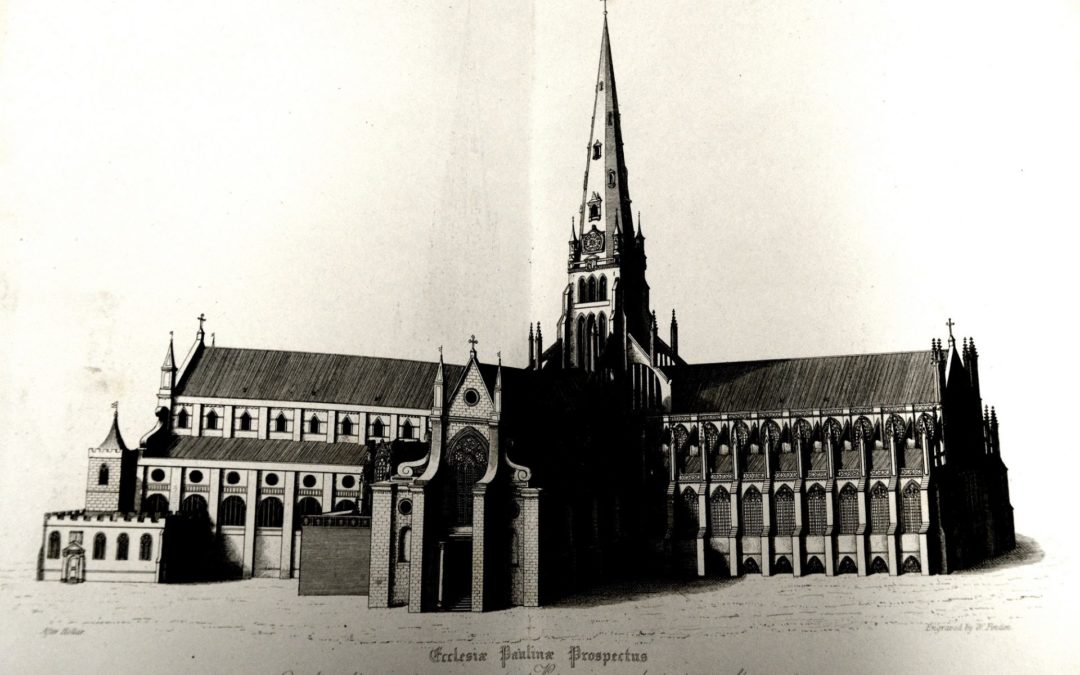The forthcoming IHR Winter Conference on Home: New Histories of Living has us thinking about the insides and outsides of buildings.
The IHR library collections support a range of study on the subject of architecture, and the new collection guide highlights some of the areas to explore. As well as the obvious parts of the collection, it draws attention to some more hidden sources of information.

Oudt Stathuys from Beschrijvingh der wijdt-vermaarde koop-stadt Amstelredam, 1664
We have many secondary works on individual buildings, building types and localities. There is much on studying and understanding buildings as well as their conservation, public interpretation and display, for example in works on using material culture and digital technologies. An 1897 piece in the journal The Antiquary outlines a lecture given at the Society of Antiquaries on legislation in different countries for the preservation of ancient buildings. The Foreign Office had collated the information following the ‘disastrous’ rebuilding of the west front of Peterborough cathedral. (The Antiquary Vol. 33, 1897)
The library has strong holdings of primary sources across the subject. Travel writing and antiquarian histories include contemporary descriptions and impressions of the built environment. Celia Fiennes, for example, wrote about Ambleside in 1698:
“villages of sad little huts made up of drye walls, only stones piled together and the roofs of same slatt; there seemed to be little or noe tunnells for their chimneys and have no morter or plaister within or without; for the most part I tooke them at first sight for a sort of houses or barns to fodder cattle in. not thinking them to be dwelling houses” (Morris, C., The Journeys of Celia Fiennes, 1949, p.196)
Landowners, tenants, architects, policy makers and commentators are all represented in biographies, prosopographies and personal narratives.
Household and trade records give insights into the building trade. For example in the Household Books of John Howard, Duke of Norfolk, we learn of the steps taken to dismantle his Colchester house in 1481, store the timbers in a barn and move it to Stoke by Nayland where Richard Tornour, carpenter, “schal rere it and sett yt up there” (Crawford, A., The household books of John Howard, Duke of Norfolk, 1462-1471, 1481-1483, 1992, Household Book II, p.121).
Records of government highlight social concerns and the resulting legislation. In an appendix to a parliamentary paper of 1864 we find a description of the history and current state of rural housing in a Report by Dr. Henry Julian Hunter on the House-Accommodation had by Rural Laborers in the different parts of England. He wrote:
“One house, called Richardson’s, could hardly be matched in England for original meanness and present badness of condition. Its plaster walls leaned and bulged very like a lady’s dress in a curtsey. One gable end was convex, the other concave, and on this last unfortunately stood the chimney, which was a curved tube of clay and wood resembling an elephant’s trunk. A long stick served as a prop to prevent the chimney from falling. The doorway and window were rhomboidal.”
(Seventh Report of the Medical Officer of the Privy Council, with Appendix, 1864, 19th Century House of Lords Sessional Papers, 1865: section on Bedfordshire, p.148. From Proquest’s UK Parliamentary Papers).

From Dugdale, The history of Saint Paul’s Cathedral, in London, 1818
Alongside the written material there is much accompanying visual material in the form of illustrations and plans. As well as illustrations in mainly textual sources such as government reports and antiquarian histories there are editions of illustrations ranging from monastic plans in The Plan of St Gall, various editions of plans and illustrations of individual architects and places, to The photography of Bedford Lemere & Co.
Find out more by visiting the guide to the History of Architecture in the IHR library.

